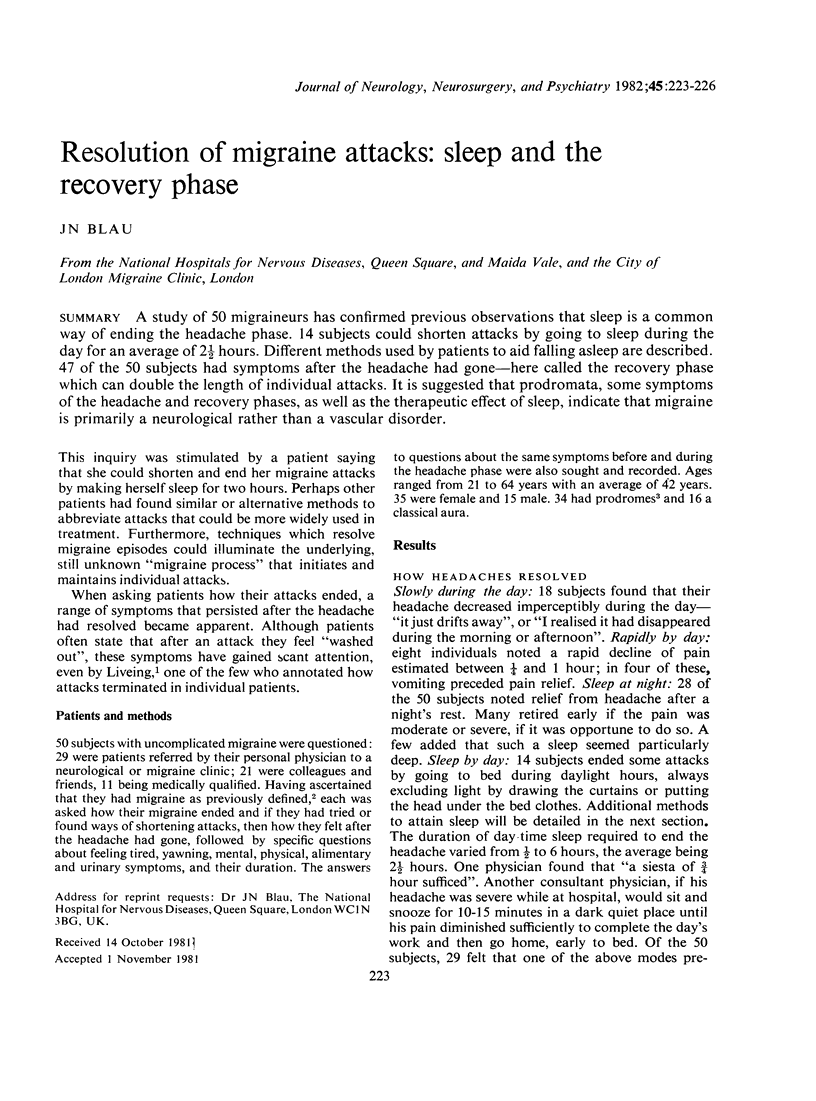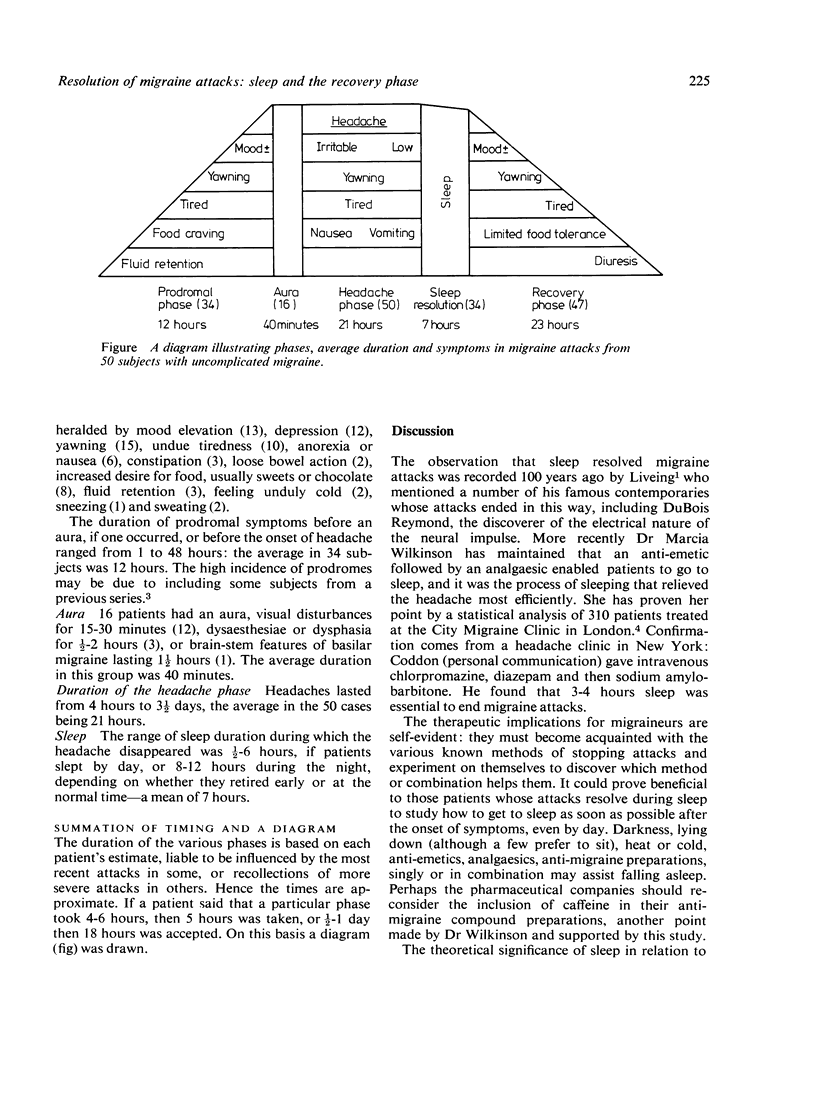Abstract
A study of 50 migraineurs has confirmed previous observations that sleep is a common way of ending the headache phase. 14 subjects could shorten attacks by going to sleep during the day for an average of 2 1/2 hours. Different methods used by patients to aid falling asleep are described. 47 of the 50 subjects had symptoms after the headache had gone--here called the recovery phase which can double the length of individual attacks. It is suggested that prodromata, some symptoms of the headache and recovery phases, as well as the therapeutic effect of sleep, indicate that migraine is primarily a neurological rather than a vascular disorder.
Full text
PDF



Selected References
These references are in PubMed. This may not be the complete list of references from this article.
- Adam K., Oswald I. Sleep is for tissue restoration. J R Coll Physicians Lond. 1977 Jul;11(4):376–388. [PMC free article] [PubMed] [Google Scholar]
- Blau J. N. Migraine prodromes separated from the aura: complete migraine. Br Med J. 1980 Sep 6;281(6241):658–660. doi: 10.1136/bmj.281.6241.658. [DOI] [PMC free article] [PubMed] [Google Scholar]
- Blau J. N. Migraine--research. Br Med J. 1971 Jun 26;2(5764):751–754. doi: 10.1136/bmj.2.5764.751. [DOI] [PMC free article] [PubMed] [Google Scholar]
- Wilkinson M., Williams K., Leyton M. Observations on the treatment of an acute attack of migraine. Res Clin Stud Headache. 1978;6:141–146. [PubMed] [Google Scholar]
- Willoughby J. O. The pathophysiology of vegetative symptoms in migraine. Lancet. 1981 Aug 29;2(8244):445–446. doi: 10.1016/s0140-6736(81)90777-7. [DOI] [PubMed] [Google Scholar]


